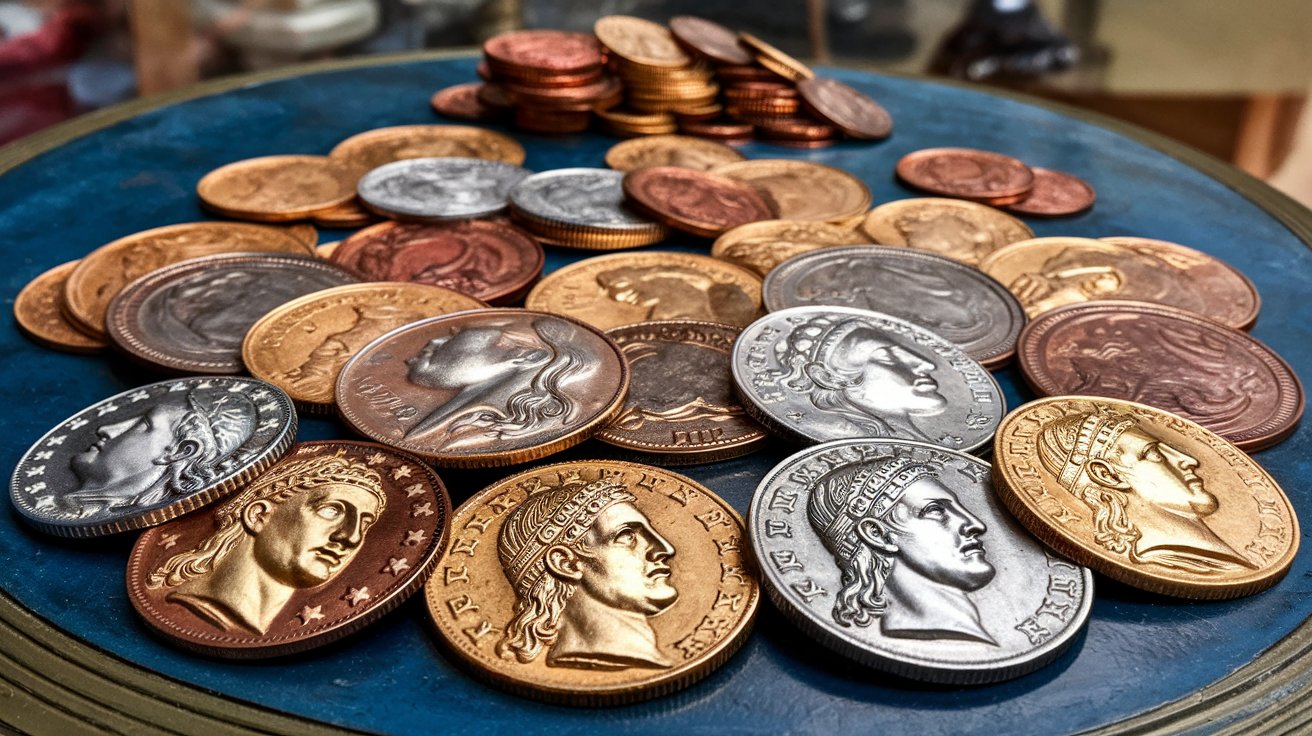The Role of Roman Coins in Ancient Trade
For history lovers, researchers, or anyone who enjoys learning through artifacts, Roman coins are more than just old pieces of metal. These small tokens played a central role in how trade flourished across vast regions during ancient times. What makes them especially fascinating is how they connected distant communities, influenced cultural exchanges, and shaped how early economies operated.
Roman coins weren’t just currency—they were messengers of political power, identity, and trust. These coins helped standardize trade, making it easier for merchants to do business across borders. From images of emperors to symbols of victories, they reflected an empire’s strength and ambition.
How Coins Shaped Economic Confidence
The Roman Empire expanded across Europe, the Middle East, and North Africa. As it grew, it brought with it a unified monetary system. Coins issued in Rome were accepted in remote provinces, providing a sense of consistency that made trade easier.
When a merchant received a coin bearing the emperor’s face, it wasn’t just change for a transaction—it was a symbol backed by state authority. That recognition gave people confidence, especially in places where bartering had once been the norm.
What Coins Told the People
Coins often displayed more than just numbers. One side typically featured the emperor, while the other held symbols related to military campaigns or religious beliefs. This turned coins into tiny communication tools, spreading political messages throughout the empire.
As these coins changed hands—from soldiers to farmers, traders to tax collectors—they carried stories with them. They helped shape how people saw their leaders and the empire’s success, even if they lived far from Rome.
Common Roman Coins and Their Uses
Denarius – A silver coin used in daily trade; widely recognized and circulated for centuries.
Aureus – A gold coin of high value, usually seen in luxury transactions or diplomatic gifts.
Sestertius – A bronze coin more accessible to everyday citizens, often used in markets and local exchanges.
Each coin had a specific purpose and played a key role in everyday transactions. Their continued use helped build a sense of unity across the empire, even among diverse cultures.
Reaching Far Beyond the Empire
While Rome’s borders were impressive, its trade routes reached beyond them. Coins have been found in places as distant as India and East Africa—evidence of commercial ties with regions outside imperial control.
The trust placed in Roman coins made them accepted by foreign merchants. The quality of their silver and gold made them attractive and reliable, even in areas unfamiliar with Roman customs.
Key Contributions of Roman Coins to Trade
Consistency in Value: Coins held predictable worth, reducing confusion in deals.
Trusted by Many: Their wide acceptance encouraged merchants to travel and trade.
Efficient Exchange: Coins allowed faster transactions than bartering.
Cultural Link: Coins introduced Roman leaders and beliefs to new regions.
These features made the Roman monetary system a powerful driver of economic growth—not just in the empire but far beyond its borders.
More Than Currency: A Cultural Tool
Coins weren’t just for buying goods. They helped people get to know their rulers, understand Roman victories, and even learn about the empire’s gods and values. Emperors used coins to showcase their accomplishments and spread their image across the land.
For example, if a new leader wanted to highlight his military success, he could stamp a scene of triumph on the back of a coin. That small detail could then travel thousands of miles, spreading a carefully crafted story.
Hidden Treasures and Historical Clues
Over the years, archaeologists have found buried coin hoards across regions like Cumbria in Britain. Many of these were likely hidden during times of conflict or instability and never recovered. These finds help historians piece together timelines and understand daily life in Roman communities.
Some coins even include exact dates or mention specific celebrations, giving researchers new tools to study history beyond written texts.
When Coins Talked Across Faiths
Some Roman coins featured gods like Jupiter or Venus. When these reached areas with different religions, they sparked curiosity. Local communities would ask about the symbols, leading to cultural exchanges.
This type of contact made coins silent ambassadors—offering glimpses into Roman belief systems and inviting dialogue between different worlds.
What to Keep in Mind About Roman Coins
Points Worth Noting
- Authenticity Matters: Experts often test metals to confirm whether a coin is genuine.
- Context is Key: Knowing where a coin was found and what era it belongs to adds meaning.
- Preservation Helps: To avoid corrosion, ancient coins must be stored properly in dry, stable conditions.
These steps help protect both the physical artifact and the knowledge it holds. Each coin has the potential to unlock stories from the past.
Echoes in the Modern World
Looking at today’s currencies, there are some clear similarities. Modern coins and bills also carry national symbols, reflect leadership, and promote trust. While modern money includes high-tech security features, the basic idea is the same—providing a reliable way to trade and communicate identity.
Roman coins remind us that a small object can serve many purposes. It can represent value, express power, and share ideas.
A Bridge Between Civilizations
At its core, the Roman monetary system helped shape one of history’s most influential empires. The coins left behind tell us more than we might expect—from the workings of ancient trade to the beliefs and strategies of powerful rulers.
Whether you’re a collector, a history buff, or simply curious about how the past shaped the present, these coins offer something meaningful. They’re tiny time capsules that connect our modern world to one that came before—and their stories are still unfolding beneath the soil and in museum cases around the world.
